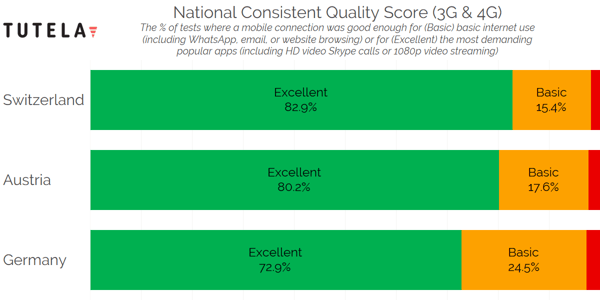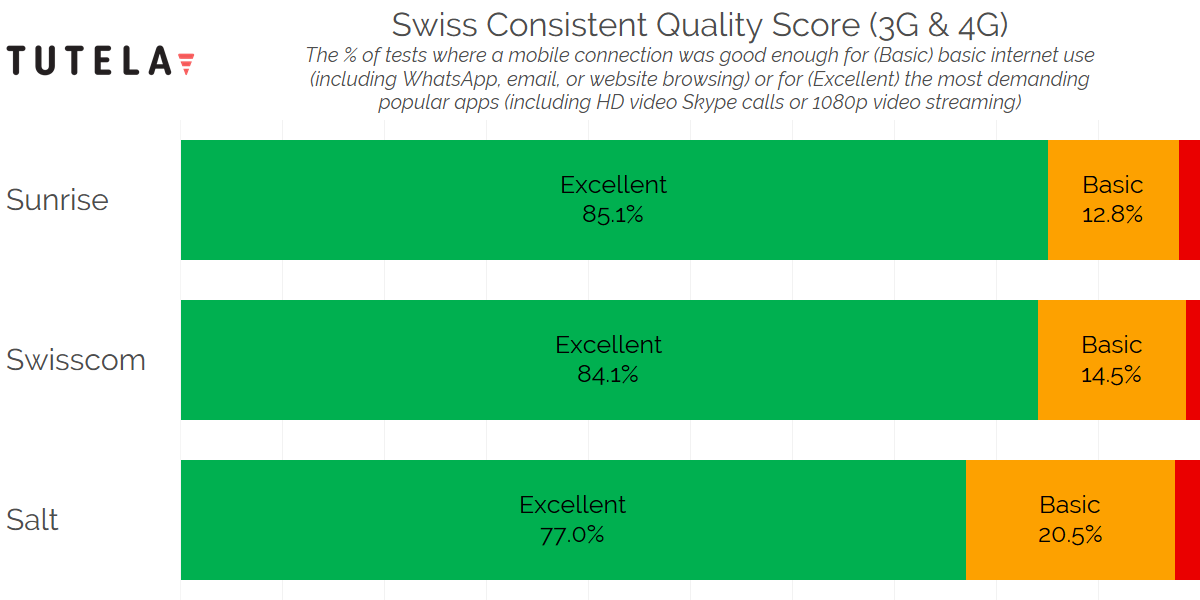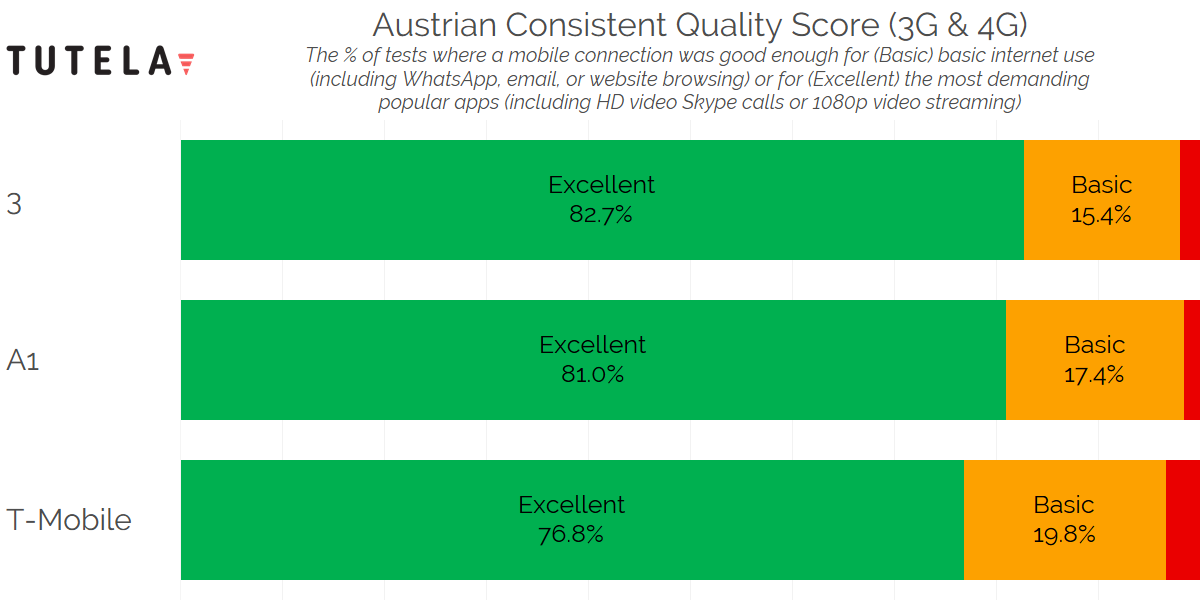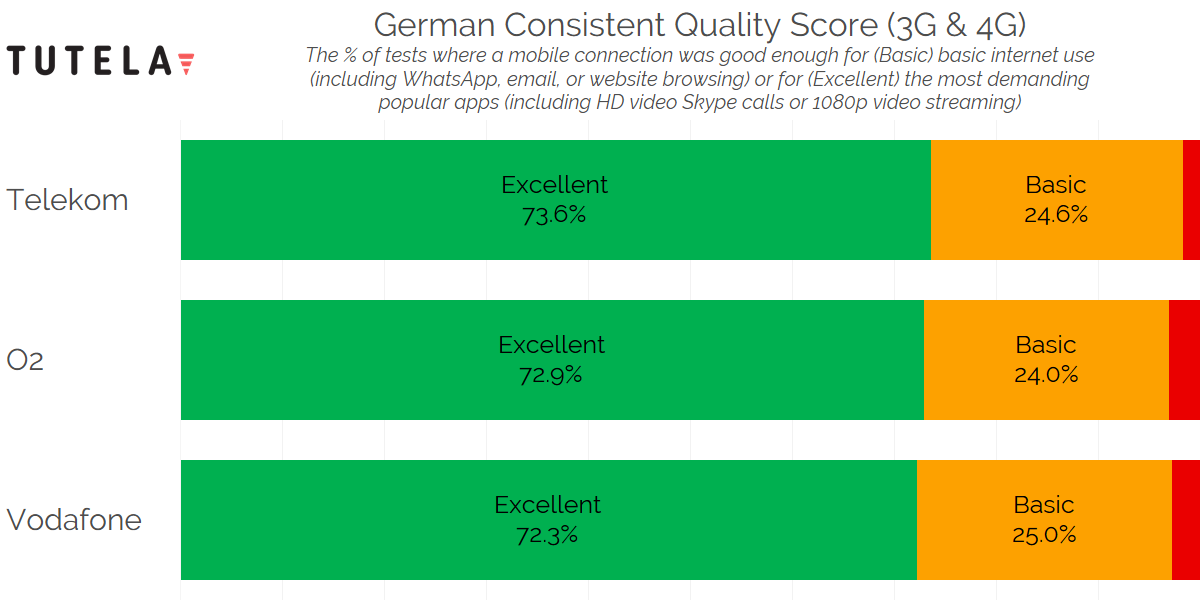| Chapter 1 Key findings |
Chapter 4 Latency |
| Chapter 2 Consistent quality |
Chapter 5 Spectrum and technology usage |
| Chapter 3 Download and upload speeds |
Chapter 6 Coverage |
Historically, download speeds have been used as the standard for measuring mobile network performance. For years, the logic has gone like this: the faster the download throughput, the better the network experience for subscribers.
However, as networks (and how subscribers have used them) have evolved, the means used to evaluate them have changed. Adequate download speed is just one of several crucial requirements for a “good” connection, and an over-emphasis on download speeds that are well in excess of what’s required for almost all mobile applications has caused other network performance measurements to be overlooked.
To solve this problem, Tutela has developed a metric called consistent quality. It incorporates five network performance measurements: download speed, upload speed, latency, jitter, and packet loss. Every time Tutela collects those measurements on a mobile connection, we compare them against two sets of thresholds, which were selected using the minimum performance requirements of popular mobile applications.
There are two sets of thresholds, excellent and basic. If all the network measurements meet or exceed the standards for excellent consistent quality, we conclude that the user can use services like Netflix, Skype, YouTube, or other real-time or streaming video applications (in 720p HD) with no noticeable problems or hiccups, since these will exceed the minimum network requirements set by these services. Connections that don’t meet the thresholds may still allow users to use those services, but without the same likelihood of a flawless experience.
The basic consistent quality thresholds follow a similar principle, but for less demanding use-cases. A connection that meets the basic consistent quality thresholds will be sufficient for things like web browsing, email, or a VOIP voice call on a service like WhatsApp or Viber. Tutela set these thresholds based on the network requirements set by the applications (where available). You can read more about how Tutela chose these thresholds and what they represent here.
In the reports, Tutela represents each operators’ consistent quality with a percentage score; this number represents what percentage of tested network connections met or exceeded the excellent or basic consistent quality thresholds. Every connection that meets the excellent consistent quality threshold also exceeds the requirements for basic consistent quality.
Across Switzerland, Austria and Germany
Swiss operators took first place for both excellent and basic consistent quality, although their advantage was most pronounced when it came to excellent quality. The difference in basic quality is minimal: the Swiss average was 98.3%, Austria was second on 97.8%, and Germany was third on 97.4%. With less than one percent separating first and last place, there’s little difference in basic consistent quality across the region.
For excellent quality however, the gap between Germany and other countries is more pronounced. Switzerland took first place with a small (but significant) lead over Austria, 82.9% compared to Austria’s 80.2%. However, the gap to Germany is much wider, with its excellent consistent quality of 72.9% putting it a ways behind the other countries.
Much of the difference is likely attributable to Germany’s greater reliance on 3G: the more demanding requirements of the excellent consistent quality thresholds make it difficult to achieve an excellent connection over 3G.




